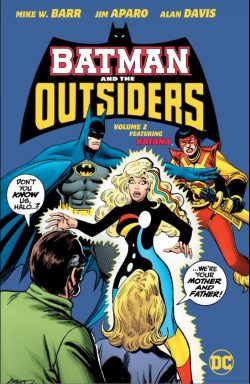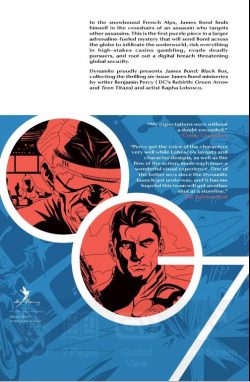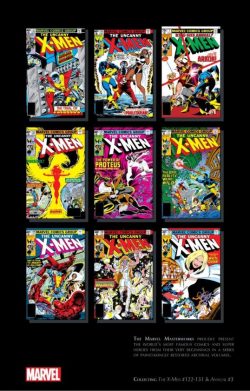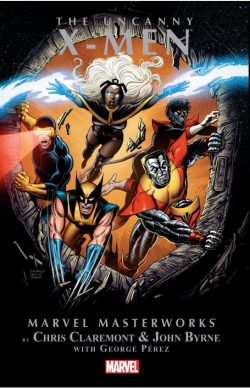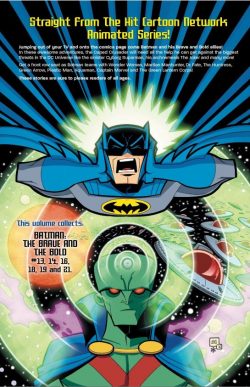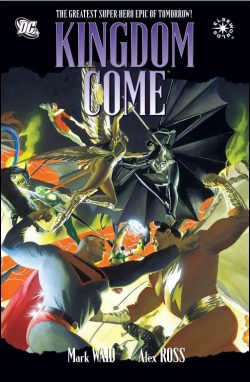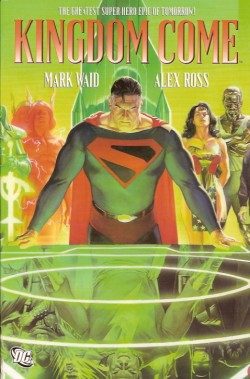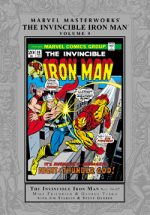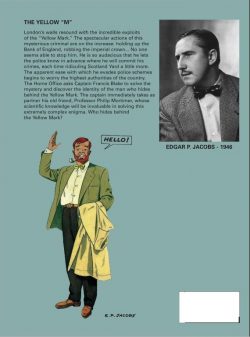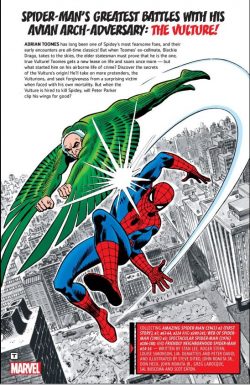
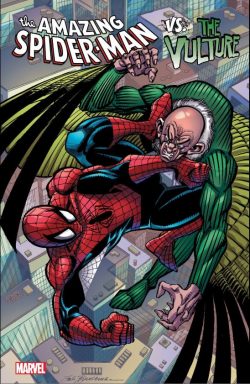
By Stan Lee & Steve Ditko, Roger Stern, Louise Simonson, J. M. DeMatteis, Peter David, John Romita, Don Heck, John Romita Jr., Greg LaRocque, Sal Buscema, Scot Eaton & various (Marvel)
ISBN: 978-1-3029-0706-8 (TPB)
Heroes are only truly defined by their enemies and superheroes doubly so, with the added proviso that costumed crusaders generally have a rogue’s gallery of fantastic foes rather than just one arch-nemesis. Even so, there’s always one particular enemy who wears that mantle: Moriarty for Sherlock Holmes; Blofeld for James Bond; Luthor for Superman.
Spider-Man has always had two top contenders… but the Vulture isn’t one of them. (*If you can’t guess who, check out the end of the review, puzzle-fans!).
Devised to cash in on the movie Spider-Man: Coming Home, this nifty trade paperback (and eBook) compilation gathers many of the now-cinematic sky bandit’s key clashes with the Wondrous Wallcrawler, tracing his rather rocky development whilst offering an uncomplicated, no-frills thrill-ride of frantic spills and chills, equally appetising to film-inspired new meat and grizzled old veterans of the Fights ‘n’ Tights arena.
Enhanced by an informative Introduction by former Spidey-Editor Ralph Macchio, this titanic tome explores the criminal career of elderly Adrian Toomes: a brilliant scientist twisted by tragedy and persecution into becoming a ruthless predator scavenging on the society which constantly betrayed him and made him unjustly suffer as a shunned outcast.
Amazing Spider-Man #1 (not included in this comprehensive paperback and digital compilation) had a March 1963 cover-date and two complete stories. The opening tale recapitulated the origin whilst adding a brilliant twist to the conventional mix…
The wall-crawling hero was feared and reviled by the general public thanks in no small part to J. Jonah Jameson, a newspaper magnate who pilloried the adventurer from spite and for profit. With time-honoured comicbook irony, Spider-Man then saved Jameson’s astronaut son John from a faulty space capsule…
The second tale found the cash-strapped kid trying to force his way onto the roster – and payroll – of the Fantastic Four whilst elsewhere a spy perfectly impersonated the web-spinner to steal military secrets, in a stunning example of the high-strung, antagonistic crossovers and cameos that so startled the jaded kids of the early 1960s.
With the second issue our new champion began a meteoric rise in quality and innovative storytelling. He also faced his first genuine super-powered, costumed crazy…
Opening the action here is ‘Duel to the Death with the Vulture!’ which revealed how a bizarre flying thief was plundering Manhattan at will, with no police effort effective against him.
Desperate to help his aunt make ends meet, Spider-Man began to take photos of his cases to sell to Jameson’s Daily Bugle, transforming his personal gadfly into his sole means of support.
Along with comedy and soap-operatic melodrama Ditko’s action sequences were imaginative and magnificently visceral, with odd angle shots and quirky, mis-balanced poses adding a vertiginous sense of unease to fight scenes. In the end, however, it was Peter Parker’s brains not the webslinger’s power that brought the Vulture down…
Amazing Spider-Man #7 (December 1963) boasted ‘The Return of the Vulture!’ as the creepy Bird of Ill-Omen became the webslinger’s first bad guy to come back for more. This time the cataclysmic final clash took place inside the Daily Bugle building and remains one Spidey’s best staged fights…
Amazing Spider-Man #48 had introduced Blackie Drago: a ruthless thug who shared a prison cell with the Vulture. After Drago orchestrated a near-fatal-accident for his cellmate, the cunning convict inveigled the ailing super-villain into revealing his technological secrets, enabling Drago to escape and take over the role: a younger, faster, tougher foe who nevertheless failed in every attempt to kill Spider-Man.
In Amazing Spider-Man #63 (August 1968, by Lee, John Romita, Don Heck & Mike Esposito) revealed the old buzzard had not died as Toomes vengefully stalked his successor in ‘Wings in the Night!’ The duel extended into the next issue with both Drago and the wallcrawler reduced to ‘The Vulture’s Prey’ until Spider-Man barely drove the aged maniac away…
A generation later, Amazing Spider-Man #224 (January 1982 by Roger Stern, John Romita Jr. & Pablo Marcos provided a fresh take on the bird bandit in ‘Let Fly These Aged Wings!’ as the now decrepit villain slumped into his imminent death-decline until inadvertently given a new perspective by Aunt May‘s latest beau Nathan Lubensky.
By attempting to boost the confidence of a fellow octogenarian, Nathan instead unleashed Toomes’ dormant inner killer and revived the Vulture’s predatory career… at least until Spidey showed up…
Amazing Spider-Man #240 (May 1983, by Stern, Romita Jr. & Bob Layton) then details how the carrion crook wised up and moved out of NYC, until the business partner who first cheated him out of all his inventions resurfaced. On ‘Wings of Vengeance!’ Toomes soared back into action, even defeating Spider-Man in his righteous fury before the tale concluded with #241’s ‘In the Beginning…’ by Stern, Romita Jr. & Frank Giacoia.
Behind a stunning John Byrne cover, Web of Spider-Man #3 (June 1985 by Louise Simonson, Greg LaRoque & Jim Mooney) ‘Iron Bars Do Not a Prison Make… …Or Vulture is as Vulture Does!’ relates the fate of a gang of thugs who appropriate Toomes’ flying tech to plunder the city as Vulturions. Even the webslinger is unable to stop the old buzzard’s quest for vengeance…
‘Funeral Arrangements’ is a story arc from The Spectacular Spider-Man #186-188 (March-May 1992 by J. M. DeMatteis & Sal Buscema), with the Vulture on a rampage and pitilessly settling old scores. Believing his life to be imminently ending, in ‘Settling Scores’ Toomes murders old allies and contacts before targeting May Parker and J. Jonah Jameson, leading Spider-Man to ‘Desperate Measures’ and a devasting showdown in ‘Final Judgement’…
Set during the first superhero Civil War, 3-parter ‘Taking Wing’ is by Peter David, Scot Eaton & John Dell and comes from Friendly Neighborhood Spider-Man #14-16 (January-March 2007). Peter Parker and his loved ones are on the run, since Spider-Man’s secret identity has been revealed on live TV. To stay safe, Peter has assumed the role of his former clone Ben Reilly…
Unwillingly allied with Wolverine and the Punisher, Spider-Man is learning to be a true outlaw when the government offer the Vulture a shady deal: capture the wallcrawler and earn a pardon…
The scheme instantly goes south when Toomes turns Parker’s old girlfriend Debra Whitman into live bait to draw out his prey and ensnares Betty Brant and Flash Thompson too…
The final battle pushes the wallcrawler to the edge of sanity, almost costing him his life, honour and integrity…
The Vulture has always been one of the most visually arresting of foes and a gallery of covers is supplemented at the close by a wealth of stunning images. Starting with Ditko’s data-file pin-up from Amazing Spider-Man Annual #1, successive covers include Annual #7 (December 1970, by Romita Sr.), Spider-Man Classics #3 (June 1993 by Tom Lyle) and #8 (November 1993 Bret Blevins) plus illustrations by Blevins, Ron Frenz & Josef Rubinstein from Official Handbook of the Marvel Universe Deluxe Edition 1985.
Also on show are original art pages by Ditko, Romita Sr./Heck/Esposito, Romita Jr. & Layton and Sal Buscema, as well as cover reproductions from Essential Spider-Man vol. 11 by Romita Jr. & Layton, a textless version of this book’s cover by Sal Buscema and those from Friendly Neighborhood Spider-Man #14-16 by Eaton.
Epic and engaging, this grab-bag of aerial assaults ant titanic tussles is pure comicbook catharsis: fast, furious fun and thrill-a-minute-melodrama no Fights ‘n’ Tights fan could resist.
© 2010, 2016 Marvel Characters, Inc. All rights reserved.
* Green Goblin Norman Osborn and Doctor Otto Octavius share the dishonours of being Spider-Man’s most dastardly nemeses. If you had trouble with that, you need to read more mainstream comics, Fanboy…


